MAKING
SMART.

MAKING
SMART.
SMART MANUFACTURING
Smart manufacturing is the primary goal of all production line digital transformation journeys, where the deployment of new technologies helps businesses gain control over their machines and processes. Smart manufacturing requires smart planning and delivery from the outset. There are myriad ways in which a production line’s data can be harvested and visualized, but only experience can determine the optimum deployment of sensors and process data for effective goal-oriented results.
GROWTH.
BUSINESS OUTCOMES IN MANUFACTURING
The desire for positive business outcomes is the obvious catalyst for new projects. At relayr, it is also the guiding principle that inspires planning throughout the course of each digital transformation. All digital journeys will be led by fixed business outcome scenarios. However, these scenarios can also be enhanced with new business targets based on the information won through the digital retrofitting of existing machinery and production processes. Once the visualization of the existing processes and pain points has been completed, on-site teams are able to integrate any new possible outcomes from the data into their objective planning.
In addition to the standard general business concerns such as reducing energy consumption and increasing line productivity and quality, there are a host of other positive business outcome objectives that materialize during the production line optimization with IIoT process.
GROWTH.
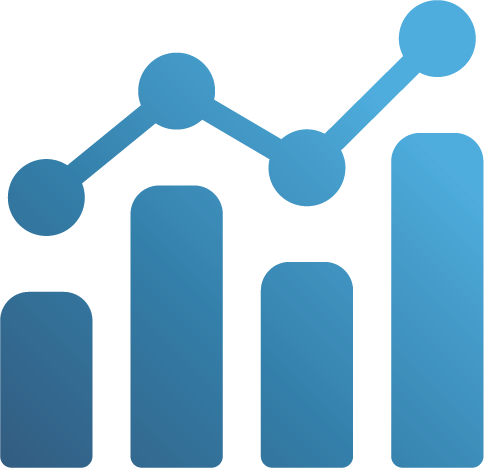
INSIGHTS.

INSIGHTS.
OEE IMPROVEMENT
Overall Equipment Effectiveness (OEE) is at the center of all production line optimization journeys. Relayr’s engineering health experts will diagnose hidden issues, remedy problems and prescribe improvements to your production lines. Data won from relayr’s sensor retro-fitting and the processed data from the existing PLCs are combined and visualized to help operators quickly identify and eliminate faulty or underperforming sections of the line process. Intimate details of the processes and the machines reveal information on how to improve production and product quality, reduce maintenance costs, increase productivity (machine uptime) and reduce costs related to unplanned downtime.
OUR WAY.
Relayr’s technology stack in turn, visualizes exactly how existing processes are functioning and, most significantly, helps to identify future optimization opportunities for the client on easily configurable, interactive dashboards. Smart manufacturing is a continuum that begins with smart planning, proceeds with the deployment of smart machines and gains momentum through the visualization and results-oriented intent of smart operators. For example, production line visualization will quickly help reduce material waste and identify processes that cause faulty parts. Configurable dashboards will furthermore provide push alerts for possible breakdowns or can reveal system anomalies and predict stock shortages. Smart-data configuration can also help prepare staff for production line changeovers and remove the need for manual shop-floor reporting and machine inspection.
Key to a partnership with relayr is the sense that you are not just using our technology and know-how to improve current efficiency, you are also availing of our new learnings to help you identify innovative business opportunities in the future.
OUR WAY.
STORIES.
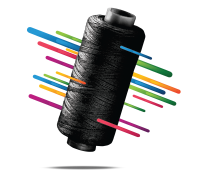
A large SME with five plants in Europe, each with around 150 production lines and an annual revenue of €90 million, gave the relayr team an explicit brief to reduce waste as well as energy consumption (to meet stringent EU regulations). As part of the package, relayr would also identify possible faults on the lines, improve maintenance planning and identify future opportunities. The set up at the time gave no insights into the amount of power consumed per machine or plant so they could not plan for energy used per batch. They also had manufacturing losses of 10% across the board due to quality standards - the cause of which they were unable to identify. Moreover, OEE data was being manually collected and collated, which was time consuming as well as error prone; the manual system was not producing good aggregate overviews. After the retrofitting and linking up to the existing PLC data pool, relayr focused their attention on anomaly detection within the system. The outcome was a significant 5% reduction in total waste product across the production lines. The digital transformation, however, also left behind a new monitoring and reporting system that could evaluate temperature and humidity levels, record downtimes of machines, measure spindle rotations on the machines and monitor the chemical levels in the water needed to process fabrics.
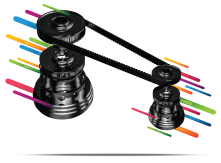
Relayr does not just work with partners on production lines but also on the planning processes behind them. A large mechanical engineering company that produced bespoke, non-standard components for wastewater solutions needed assistance in finding a system to estimate the time it takes to produce custom parts. They were manually predicting the time using best guesses. The mean average percentage error (MAPE) of the human estimation was as high as 26%. This inaccuracy caused production slowdowns as there were longer wait times from one factory station to the next. The company provided relayr with a dataset for a common component type, including details about length, width, etc., and the actual production time it took to make them.
Using this basic information, a relayr machine-learning algorithm created a prediction template that could be used on other parts types. This reduced the mean error values to 14.6%. The business outcomes included increased accuracy due to the visualization of real-time data rather than the previous system where estimates were used to plan production cycles. This change in turn helped to increase productivity as it gave workers more concrete goals. The improvements also reduced labor costs as the time-consuming ‘guesstimation’ was eliminated from the planning process.
Using this basic information, a relayr machine-learning algorithm created a prediction template that could be used on other parts types. This reduced the mean error values to 14.6%. The business outcomes included increased accuracy due to the visualization of real-time data rather than the previous system where estimates were used to plan production cycles. This change in turn helped to increase productivity as it gave workers more concrete goals. The improvements also reduced labor costs as the time-consuming ‘guesstimation’ was eliminated from the planning process.
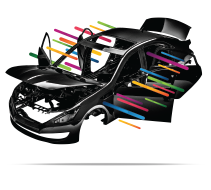
The relayr team was called in to improve the performance of a large production line for a major international manufacturer and distributor of car suspension parts. The production line in question was actually a number of machines and was key line at the company’s main manufacturing base. After the initial implementation phase where the relayr team was tasked with improving line performance and reducing losses, the visualized data revealed part of the system that was producing up to 100 faulty parts per shift (around $4k per shift). The data also revealed critical bottle necks at a gas filling machine on part of the line. Both of these issues could then be dealt with appropriately.
In the post-implementation phase, the team then worked on helping the manufacturer to predict and therefore speed up changeover times on the line. They developed a stock- taking widget that showed real-time critical buffers and prepared shop floor crews for the impending line change with SMS alerts. The immediate outcomes were enhanced by the newly installed predictive maintenance alerts and anomaly detection systems that were left in place. The company now had remote, centralized control over the entire production line.
In the post-implementation phase, the team then worked on helping the manufacturer to predict and therefore speed up changeover times on the line. They developed a stock- taking widget that showed real-time critical buffers and prepared shop floor crews for the impending line change with SMS alerts. The immediate outcomes were enhanced by the newly installed predictive maintenance alerts and anomaly detection systems that were left in place. The company now had remote, centralized control over the entire production line.
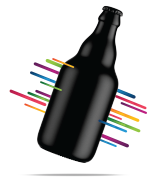
Relayr was called in by a major parts manufacturer and servicing agent for bottling plants. They were tasked with improving OEE at all the plants under contract.
Production lines had capacities of up to 1.2m bottles using machines with an average age of 20 years. As well as increased productivity and lower maintenance costs (the management were under budgetary constraints), the team were asked to reduce unplanned downtime, which cost up to $35,000 per/hour, advance OEE values and improve product quality.
Relayr retrofitted the existing machinery with sensors to collect previously unseen data that was then presented on customized dashboards. The data revealed key parameters that could help the operators to improve product quality and minimize waste. The anomaly detection features identified three functions that were responsible for 90% of their plants’ downtime - filtering, packaging, and labeling.
Due to a 20% increase in machine uptime, the client achieved an 11% performance improvement overall. The 8% quality improvement and 30% reduction in maintenance costs led to a 2% increase in operating profit margin.
Production lines had capacities of up to 1.2m bottles using machines with an average age of 20 years. As well as increased productivity and lower maintenance costs (the management were under budgetary constraints), the team were asked to reduce unplanned downtime, which cost up to $35,000 per/hour, advance OEE values and improve product quality.
Relayr retrofitted the existing machinery with sensors to collect previously unseen data that was then presented on customized dashboards. The data revealed key parameters that could help the operators to improve product quality and minimize waste. The anomaly detection features identified three functions that were responsible for 90% of their plants’ downtime - filtering, packaging, and labeling.
Due to a 20% increase in machine uptime, the client achieved an 11% performance improvement overall. The 8% quality improvement and 30% reduction in maintenance costs led to a 2% increase in operating profit margin.
LET'S TALK



